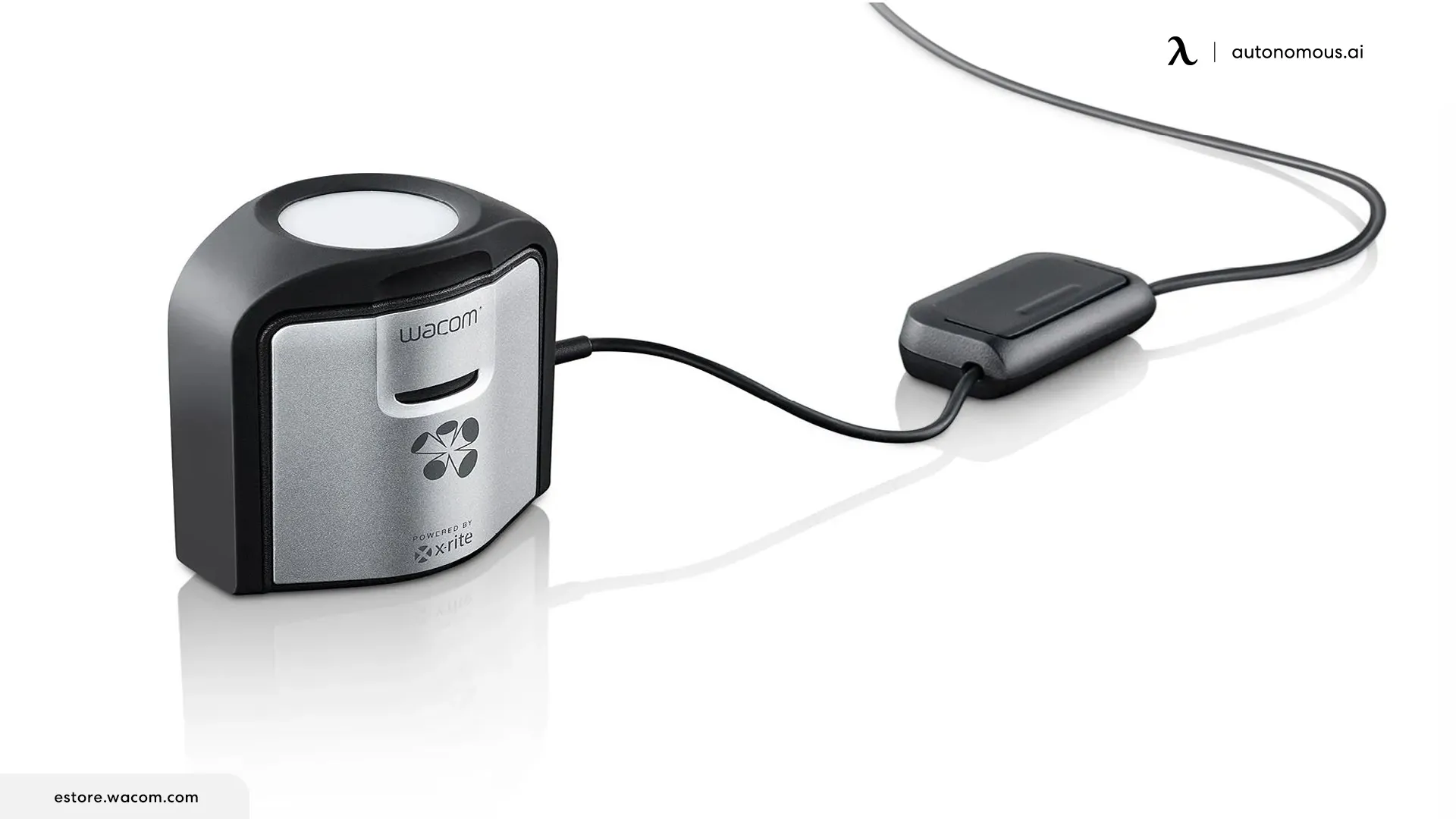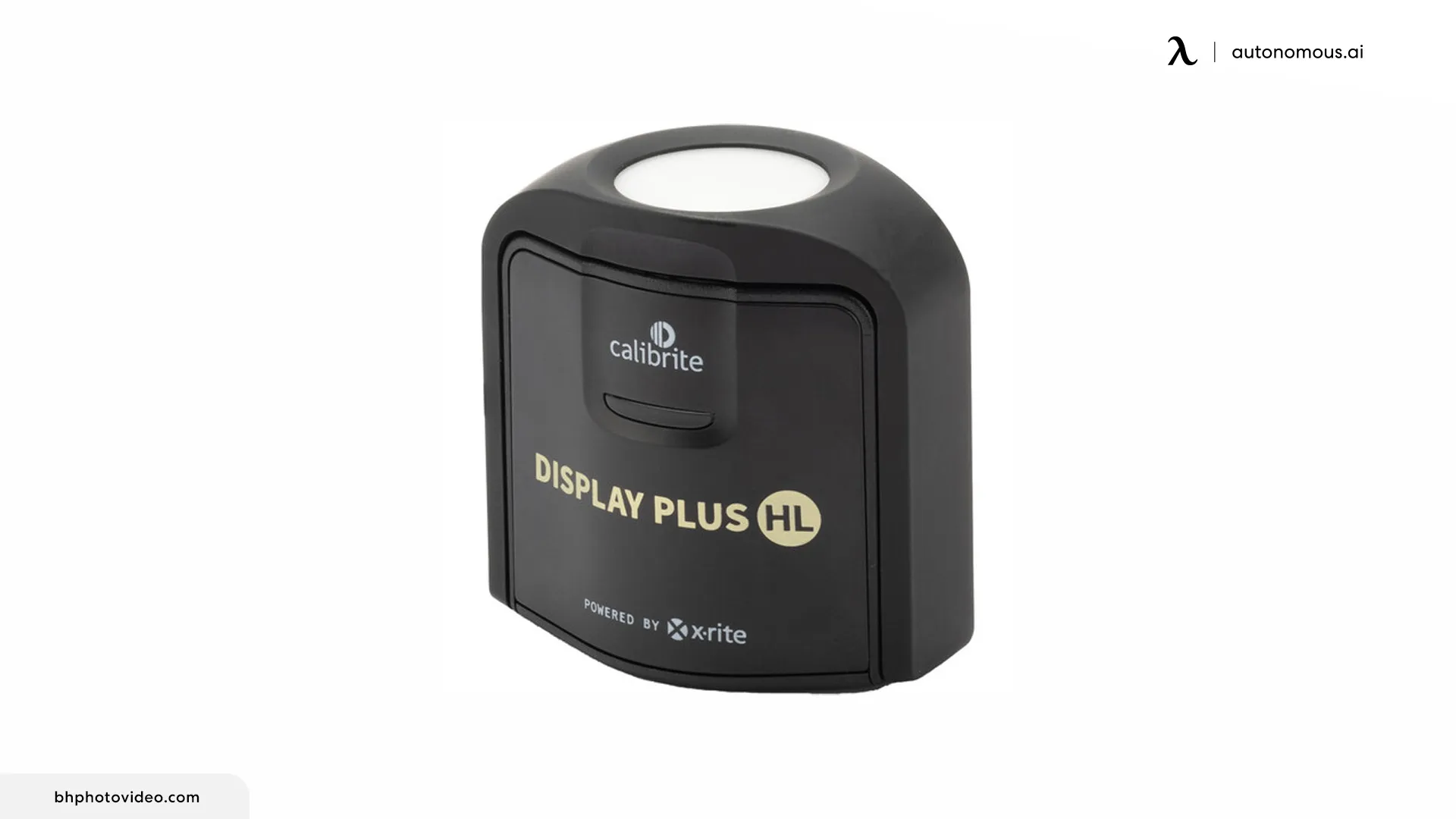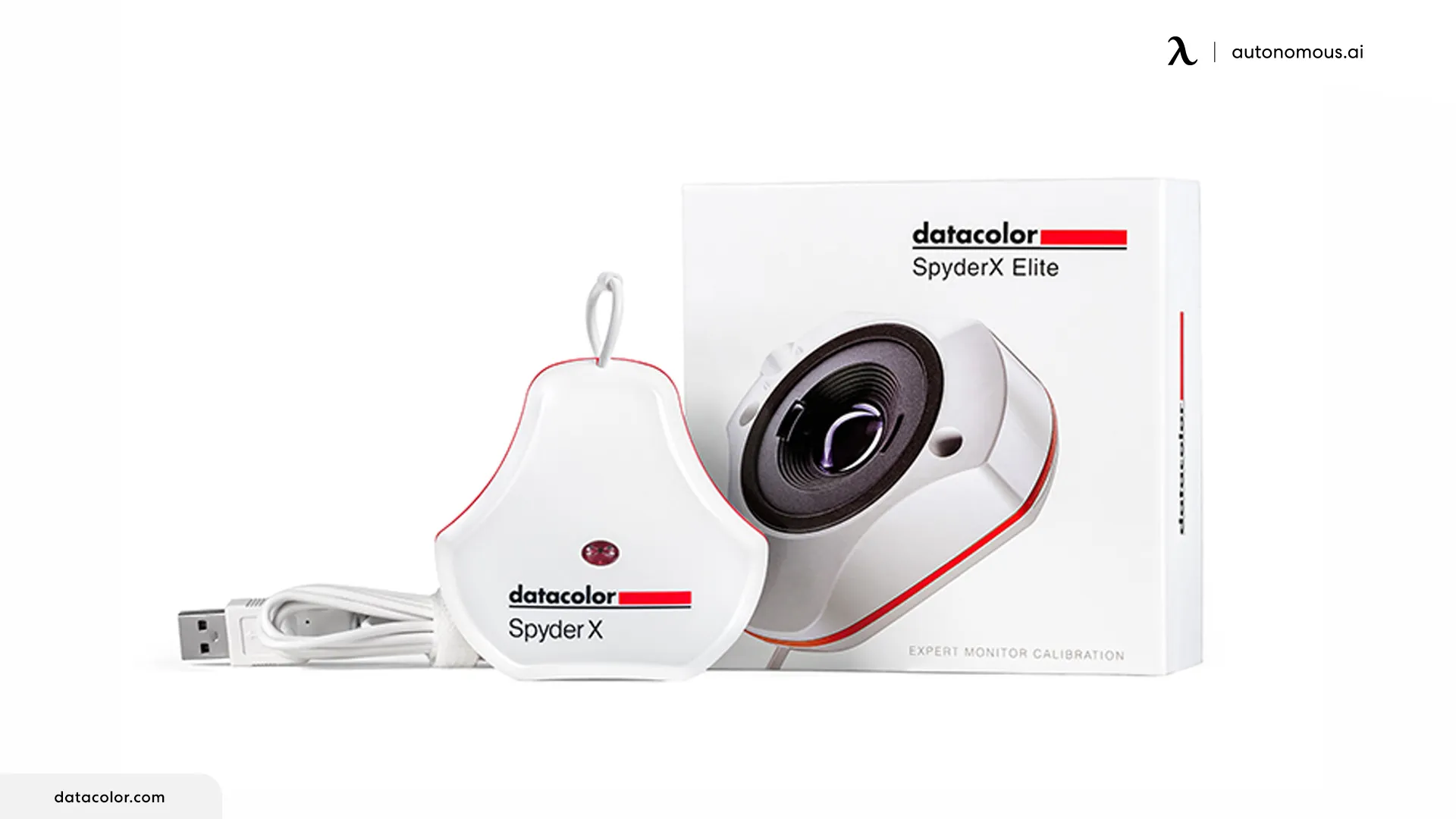
A No-nonsense Guide to Monitor Color Calibration for Everyone
Table of Contents
Monitor color calibration is crucial for photography, design, and video production professionals. It guarantees that the colors displayed on the screen align with those in the final output, which is vital for high-quality work and client satisfaction.
In this guide, I'll simplify the calibration process, making it approachable for a diverse audience, including gamers and designers looking for improved visual experiences.
By adhering to my advice, you'll understand how to accurately adjust your displays, ensuring precise color representation across all your devices.
What Is Monitor Color Calibration?
Monitor color calibration is the process of adjusting the display of your screen to meet a specific standard of coloring accuracy. It's crucial to ensure that the colors you see on the screen closely match those in the final output, whether it's a printed photograph, a digital design, or a video production.
This accuracy is important for professionals whose work depends on precise color representation, as it affects the quality and integrity of their projects. If your PC screen is not that good, you can always connect a monitor to a laptop that has a better visual display. It can help you with your work and make you more efficient.
The Impact of Monitor Color Calibration on Professionals and Everyday Users
Accurate color reproduction greatly impacts both the user experience and professional work. For professionals in photography, design, and video production, it ensures that their creations are presented exactly as intended, avoiding costly mismatches and reworks.
This precision becomes even more important when using a vertical monitor setup, which is favored for its space-saving benefits and the unique perspective it offers for reading, coding, and browsing.
Now, for everyday users, including gamers, it enhances the visual experience, making digital environments more immersive and true-to-life.
Why Is Monitor Color Calibration Essential?
Whether it's for professional purposes or personal enjoyment, understanding and implementing computer monitor color calibration is essential for anyone looking to achieve the best possible coloring accuracy from their digital displays.
This makes sure that regardless of the orientation or connection of your monitors, the color remains consistent and true across all your devices.
Moreover, selecting the right office accessories, including monitor stands and lighting, can complement your color calibration efforts. Together, they create an optimal viewing environment, ensuring color accuracy and consistency across all your projects and digital displays.
Getting Started with Monitor Color Calibration
Starting with monitor color calibration involves creating a neutral lighting environment and reverting your display to its default settings - brightness, contrast, and color. This initial step guarantees accurate and consistent color representation, allowing for further precision enhancements using specialized calibration tools.
Assessing your workstation setup is essential when considering a PC monitor color calibration. For those using a standing desk, positioning the monitor at the correct height and angle can help avoid glare or reflections that could skew color perception. The ideal setup will allow you to view the monitor head-on, at eye level, ensuring that colors are seen consistently across the screen.
Finally, color calibration plays a crucial role for users curious about how to make a 4-monitor setup work in harmony. Making sure that each monitor is calibrated to the same standards is important for a seamless visual experience, especially when using the screens side by side.
How Often Should You Calibrate Your Monitor for Perfect Color?
Various factors, including the professional requirements of your work and changes in your working environment, can influence the frequency of monitor color calibration.
Professionals in fields where color accuracy is critical, such as photography, graphic design, and video production, might need to calibrate their monitors more frequently to ensure the utmost precision in color representation.
For regular users, a general guideline is to perform monitor color calibration every two to three months. However, professionals should consider calibrating their monitors as often as once a month or whenever there is a big change in their working conditions.
Tools such as a monitor arm can help maintain consistent calibration results by ensuring that your screen remains in the optimal position. This handy tool can help mitigate the effects of ambient light changes by allowing for easy repositioning of your monitor away from glare or direct light, which can alter the perceived color on your screen.
The Best Monitor Calibration Tools Available Now
Choosing the right tools for monitor color calibration is essential for anyone aiming for exact coloring precision on their displays. The calibration tool you select can greatly influence your visual outcomes.
Here are some tools that you can use:
- Software integrated into your operating system: These tools help you start with basic adjustments and are great for those exploring multiple monitor setup ideas, ensuring consistency across screens.
- Online color calibration websites: Use these for a quick and free way to adjust your monitor's color. They guide you through simple steps to improve color accuracy.
- Built-in monitor settings: Almost all monitors come with their own menu for adjustments. Tweaking these can greatly enhance your display's color without needing external tools.
- Color calibration tools within graphic software: If you use software for photo editing or design, many have built-in tools to help calibrate your monitor right within the program.
- Guides and tutorials for multiple monitor setup tricks: Plenty of online resources offer step-by-step instructions to fine-tune your displays, ensuring color uniformity and accuracy across your workspace.
Top Choices for Best Monitor Color Calibration
Selecting the best monitor color calibration tools is essential for achieving precise and consistent colors across your displays. Here, I've highlighted my top picks to help ensure your visual work is accurately represented.
1. Wacom EODIS3-DCWA Color Manager
The EODIS3-DCWA Color Manager combines Wacom's hardware prowess with X-Rite's color science expertise. This tool simplifies the color calibration process, making it accessible to a wide range of users, from professional artists and designers to gamers looking for accurate color representation.
How I Picked and Tested the Product
My selection process prioritized accuracy, compatibility, and ease of use. I chose the Wacom EODIS3-DCWA for its integration of i1Profiler software, known for its reliability in color management.
The testing process involved calibrating various monitor types, including those with modern technologies such as OLED and mini-LED, to evaluate performance across different use cases.
Moreover, I specifically looked at the device's ability to maintain color accuracy over time and under different lighting conditions.
Who Is This Review For?
This review caters to professionals in art, graphic design, and video production who rely on color accuracy for their work. It's also for gamers and tech enthusiasts who value true-to-life colors for an immersive visual experience.
Whether you're fine-tuning colors for a design project or looking for consistency across a multi-monitor setup, the Wacom EODIS3-DCWA offers the precision you need.
Features
The Wacom EODIS3-DCWA stands out for its comprehensive control over color calibration parameters, including white point, luminance, and gamma.
Essentially, its compatibility with Android and iOS devices through the X-Rite Color TRUE mobile app extends its utility beyond traditional PC monitors.
Also, the tool supports multiple monitor profiling, which is essential for users with elaborate setups. Its intelligent iterative profiling technology adapts to each display's unique color properties.
Pros
- Versatile compatibility: Works with a broad range of display technologies and mobile devices.
- Advanced calibration control: Offers detailed adjustments for professionals.
- Reliable software: Uses X-Rite's industry-leading i1Profiler for trusted calibration results.
- Comprehensive profiling: Supports multiple monitors and workgroup setups.
Cons
- Price: The professional-grade features come at a higher cost.
- Setup complexity: Initial setup and software installation may challenge users without a DVD drive or USB 2.0 ports.
2. Calibrite Display Plus HL (CCDIS3PLHL)
The quest for true color representation across digital devices leads us directly to the Calibrite Display Plus HL, a standout tool rigorously tested for its precision in high-luminance display calibration.
How I Picked and Tested the Product
This device shines in its ability to harmonize the vibrancy and accuracy of colors on screens used by professionals in photography, design, video editing, and gamers seeking enhanced visual experiences.
My comprehensive testing evaluated its performance across various display technologies, focusing on ease of use to ensure that it meets the demands of a broad audience.
Who Is This Review For?
The tool is indispensable for creatives who depend on color accuracy for their projects, ensuring on-screen colors match final outputs perfectly. It's also a game-changer for gamers and tech enthusiasts who want the most accurate visual experience.
Anyone needing precise color correction across devices, from multi-camera shoots to complex digital artwork and fast-paced games, will find the Calibrite Display Plus HL invaluable.
Features
The Calibrite Display Plus HL's advanced high-luminance sensor can measure up to 10,000 nits, making it uniquely suited for today's most brilliant displays, including mini-LED, OLED, and Apple XDR panels.
It's equipped with comprehensive Calibrite PROFILER software, offering a wide range of customization, from white-point adjustments to gamma settings.
This calibration device is designed for versatility and is compatible with various operating systems and even some third-party software. Moreover, it is packaged with a USB-C connection (and USB-A adapter), all in eco-friendly packaging, complete with a travel pouch.
Pros
- Unmatched calibration range: Designed for the brightest displays, ensuring long-term utility.
- Extensive customization: Advanced software allows for personalized calibration settings.
- Broad system compatibility: Adaptable with multiple operating systems and display technologies.
- Designed for the future: Ready for new advancements in display tech, offering a lasting solution.
Cons
- Investment cost: Its advanced features and capabilities come at a premium price.
- Learning curve for new users: The depth of features may be daunting for those new to color calibration.
3. Datacolor Spyder X Elite
Selecting the right calibration tool is crucial for anyone seeking accurate color representation on their digital displays, and the Datacolor Spyder X Elite excels in this regard.
How I Picked and Tested the Product
My method for choosing and testing emphasized identifying a device that blends precision, user-friendliness, and versatility. This makes it ideal for a diverse audience that includes both professionals in creative fields and gamers seeking the ultimate visual experience.
Who Is This Review For?
Professionals such as photographers, designers, and videographers who depend on precise color accuracy for their work will find this review particularly useful.
Additionally, gamers who prioritize visual fidelity in their gaming setups will benefit from understanding the capabilities of the Spyder X Elite.
Features
The Spyder X Elite's advanced lens-based color engine is a game-changer, offering unmatched color accuracy for various monitors, including the latest OLED, LCD, and Wide Gamut displays.
It features automatic room-light monitoring, ensuring that the colors remain consistent in any lighting condition, and its step-by-step manual makes the calibration process accessible to users of all levels.
Furthermore, the tool's SpyderProof functionality allows for immediate before-and-after comparisons, showcasing the calibration results in real-time.
Pros
- Rapid calibration: Completes the calibration process significantly faster than its predecessors.
- Unrivaled accuracy: Ensures the highest level of color precision for critical professional work and immersive gaming experiences.
- Intuitive use: Suitable for both beginners and experts, with guidance for newcomers and advanced options for seasoned professionals.
- Flexible calibration options: Supports a broad range of display technologies and user needs, including matching and tuning multiple displays.
Cons
- Cost: The high-quality features come at a premium, potentially limiting access for hobbyists or those with tight budgets.
- Initial learning curve: Despite its user-friendly design, the vast array of features and customization options might initially overwhelm new users.
Wrapping Up
It's important to understand how monitor screen color calibration works, as it plays a crucial role in many digital fields, such as photography, design, video production, and gaming.
By following the calibration process, you can ensure that your monitor displays colors accurately and vibrantly. This can greatly enhance both your professional work and personal entertainment.
Learning how to calibrate the monitor color is a key step in ensuring your digital display accurately reflects the true colors of your projects and media.
Frequently Asked Questions
When it comes to ensuring the best possible viewing experience on your monitor, several common questions arise. Below, we address these inquiries, focusing on monitor color calibration and its impact on your digital life.
What is a monitor calibrator tool?
A monitor calibrator tool precisely measures and adjusts your monitor's color output against standard or original source content. This device is crucial for accurate color representation on your screen.
What's the purpose of a monitor calibrator tool?
Monitor color calibration aims to achieve true coloring accuracy, making it essential for professionals in photography, design, and video editing.
Accurate colors ensure that projects appear correctly across various displays and in final prints. By providing vibrant, true-to-life colors, this can enhance the gaming and movie-watching experience.
Do I need a monitor calibrator?
Investing in a monitor calibrator is beneficial if color accuracy is critical for your work or if you prefer an enhanced viewing experience. It's particularly important for creatives and gamers focused on visual fidelity.
How often should I calibrate my monitor?
Calibrating your monitor every 1-2 months is advisable. However, more frequent calibration may be necessary if you work in a color-sensitive field or notice coloring discrepancies.
Stay connected with us!
Subscribe to our weekly updates to stay in the loop about our latest innovations and community news!
Interested in a Link Placement?
Spread the word
.svg)
.svg)








/https://storage.googleapis.com/s3-autonomous-upgrade-3/production/ecm/230914/bulk-order-sep-2023-720x1200-CTA-min.jpg)

